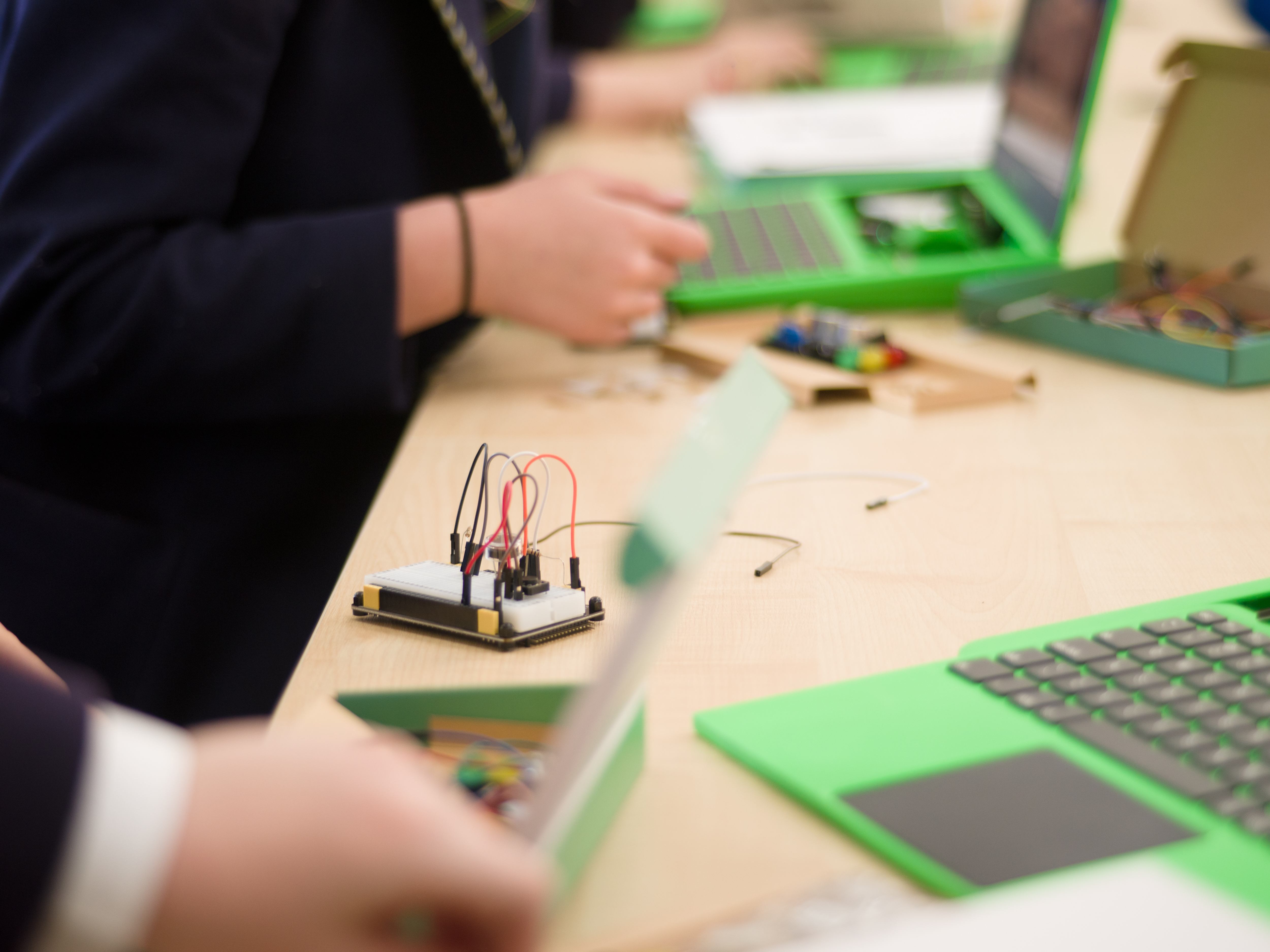Cornwall Hill College in Pretoria, South Africa, focuses on providing wide-ranging opportunities and exceptional facilities for students to excel in academic, sporting and cultural spheres, while still retaining traditional values of honesty, integrity, compassion and responsibility.
We spoke to Deon Londt, a Computer Science teacher at Cornwall Hill, where they use pi-tops with students in grades six and seven, to see how they’re getting on.
pi-top: Hi, Deon. Can you tell us about your school's computer science needs prior to bringing in pi-tops?
Deon: I led an exciting initiative to look into possible apps, robots, and relevant activities for students in grades six and seven, to introduce them to the new STEAM component of our curriculum. I found a range of options, but when I saw pi-tops at the BETT show in the UK, I knew they weren’t like anything the school had used before. They encompassed the type of learning we desired within the classroom environment.
pi-top: What type of learning is that?
Deon: As a progressive school, we want to fill the gap between the curriculum and the learning experience we’re trying to create. One of the best features about the pi-tops is that they fill that gap. They allow for collaborative, creative and modern learning, which are teaching strategies
we try to use in all subjects.
pi-top: What was it like to get started with the pi-tops?
Deon: The set-up of the pi-tops is simple and easy to explain to students. Once I went through the program once and built my own one, I felt comfortable to teach the projects to the kids. By the second or third class I felt like a pro!
[pi-tops] allow for collaborative, creative and modern learning
pi-top: And what did your students think when you brought the pi-tops out?
Deon: The learners loved the pi-tops. They were very engaged throughout and had the opportunity to learn from one another in a rich collaborative environment. The user experience is something we as a school have never come across before, and the students loved the look and feel of the pi-tops. The bright green computers immediately grabbed their attention!
It has been a wonderful experience and challenge for them.
pi-top: You mention collaborative learning. Can you expand on that?
Deon: pi-tops are very effective when it comes to collaborative learning, because they allow students to learn and work together. For one project, students worked in groups of two, but when they got stuck along the way, they first tried to get help from other groups instead of asking the teacher. Working in groups of two allows the learners to learn from one another
as well as correct mistakes, and it facilitates peer review while they work.
pi-top: Let's talk about the curriculum content. How did you find that?
Deon: Teaching STEAM subjects is very important because we are training kids for jobs that don't exist yet, and STEAM equips them with some of the skills we as a school see as important for the future. The pi-top projects have had a positive impact on our curriculum as it opened a new world of possibilities for the kids and they saw a different side of computers. It also filled a void in our computer science curriculum as we did not have any physical computing activities available. The lessons had well-written instructions and allowed students to work at their own pace and this project-led way of working is an effective way to deliver computer science, and other aspects of the STEAM agenda.
pi-top: What improvements have you seen since using pi-tops in your classroom?
Deon: I noticed an improvement in computer science competency after using the pi-tops, and learners seem to be more meticulous while coding. The best response from the learners was always when they could see their code working, like the light bulb lighting up or the buzzer making sounds. The fact that the program gives feedback helps the learners to 'self-diagnose' and fix their own mistakes, which is a very important part of the learning experience.
pi-top: Your final question! Has anything surprised you about your experience with pi-top?
Deon: Yes – the fact that the girls excelled as opposed to the 'stigma' that coding is only for boys. I would definitely recommend pi-top to any other teachers, students or schools.
We also asked Deon’s students for their feedback, with some fascinating results. 73% of students said that pi-tops have had a positive impact on either their understanding or interest in computer science.
When asked how using pi-tops has changed the way they feel about computing and coding, students responded with answers like, “we work together as a team,” “it has encouraged me to find out more about building programs and computers,” “it has given me more confidence in programming,” and “I have more interest in the topics.”
Of the students who said that they had considered continuing to study computer science, 55% cited the reason as being directly because of pi-tops.
We are hoping to reach more and more students across the world in this way, encouraging them and their teachers to become active STEAM advocates. As Deon says, “it opened a new world of possibilities.”
This interview was first published in ‘Learning by Making’ magazine Issue 2. If you’d like to find out more about how ‘learning by making’ with pi-top can help you, your students and your school, get in touch here.
